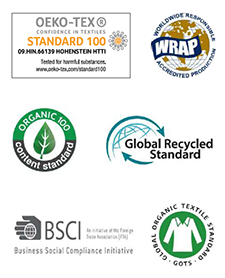Quality & Production
A crispy, fresh T-post tee in your hand – a great feeling, right? But cotton production is notoriously bad for the environment, and the whole fashion industry is making you culprit in the destruction of an entire eco system. Not cool. So how do we stay in style, without turning earth into one big chemical plant? Well, there are ways, and T-post has decided to shape up and take out the trash.

If you’re anything like me, you’ve probably invested the better part of your net worth in cotton. I mean, not in raw cotton – that would be insane – but in cotton-based apparel like denim, t-shirts and whathaveyou. And what’s the harm in that? Sure, it might not have the long time financial gains that gold, stocks or real estate will give, but if style is what makes you happy, why not?
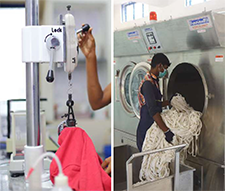
Well, for one, cotton farming takes real toll on the environment. With cotton representing nearly half the fiber used to make clothes and other textiles worldwide, and with roughly 20 000 liters of water required to produce one kilo of cotton (a t-shirt and a pair of jeans). This adds up to a lot of agua, no? After a quick and very unscientific approximation, I realize my wardrobe alone guzzled down about ten million liters of water throughout the journey from planting to beloved streetwear. Wow.
As a consequence, cotton farming is responsible for a quarter of the global sales of insecticides, and 11 percent of the world’s sold pesticides. These chemicals have a severe impact on both the workers in the fields and the ecosystem. And it doesn’t end there. Yarn and knitting, dyeing, bleaching, cutting, sewing – it all has an effect on the environment as well as the people doing the dirty work. So while crispy tees are a crucial part of any self-respecting style-lovers wardrobe, it’s not exactly eco-friendly.
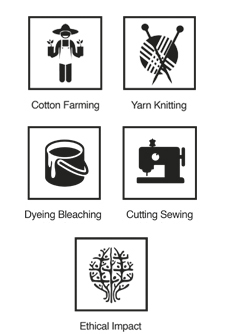
So what to do? How do you maintain a flawless style and still be able to look at yourself in the mirror (which is a big part of keeping a flawless style, isn’t it?). Well, we educate ourselves.
The walls of the T-post office are draped with past issues – the ALIFE-collab, the Kung Fury-shirt, the TEDx-issue and dozens more. Situated next to the Umeå River, in an old printing facility, this is where the ideas of more than 170 issues have taken form over the past 17 years.
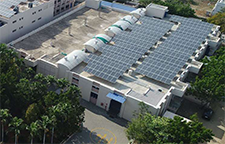
“We’ve always made our shirts from organic cotton. I figured: as long as the eco-label is on it we’re good to go, right?”, says Peter Lundgren, founder and CEO of T-post.
He continues: “But it turns out – there’s a lot more to it. Using “organic cotton” only means the actual cotton is eco-friendly, the rest of the process from fabric to finished T-post tee is a whole different ball game.”
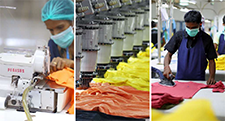
Peter casually slides down into the huge red 1950’s American diner-style couch framing the corner of the show room, the red faux leather creaking as he reaches across the table for a stack of papers containing rough sketches for the coming issues of T-post. The bookshelf lining the south-facing wall is a tasty buffet of books, magazines, albums and dvds relating to urban culture, hip hop, streetwear and art; memorabilia collected from a number of trips across the Atlantic.
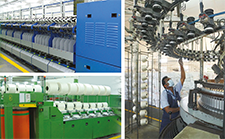
His passion for classic streetwear is obvious, now the same energy is going into finding ethical, eco-friendly production for the tees. “Look, we don’t pretend to be any better than anyone else, we’re not. I knew just as little as the next guy about the process, going in to this. But once you start to really look into it, you realize the impact our choices actually have, on the environment as well as on the workers. Now we’re looking for the best options for every single step of the manufacturing. But it’s a real jungle out there, we’ve needed a lot of guidance and help”, says Peter Lundgren.
The production of a T-post tee is done in five steps, aside from design and editorial work that are taking place in Sweden. The five steps are carried out in our heavily certified and ethically dedicated factory in Tirupur India (in good company with FILA and Ralph Lauren).
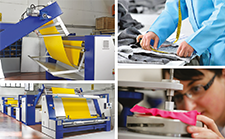
Every step have its own challenges:
- Cotton farming – Better Cotton Initiative (BCI) offers traceability, guarantees better conditions for the people who produce it, and is better for the environment it grows in.
- Yarn and knitting – should be ISO 14000 certified, and be a SA 8000 facility.
- Dyeing and bleaching – Zero Liquid Discharge process (ZLD), ISO 14000 certification, SA 8000, Oeko Tex 100. This addresses the chemicals used in the wet process.
- Cutting, sewing, finishing – preferably ISO 14000 and SA 8000 facilities.
- Shipping – the shortest way possible, directly from the factory to your mailbox.
But identifying the challenges is just the beginning, and things are changing fast. To stay on top of the manufacturing process means constantly reevaluating the suppliers, and questioning every step of the way. “It’s a work in progress, we really need to learn more about how it all comes together and the effects every choice has. In the end, it’s all about transparency, to be able to follow and understand the process.”In short: It’s time to take out the trash”, says Peter Lundgren. Words: Jonas Pekkari
